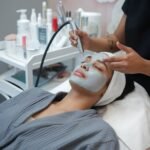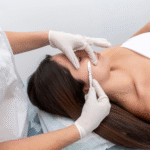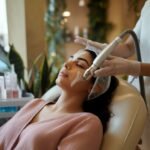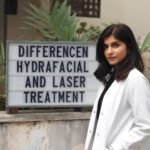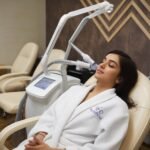How to Remove Stretch Marks: Effective Treatment Options to Get Rid of Them
- Home
- Mole, Wart & Skin Tag Removal
- how to remove stretch marks

Stretch marks develop from rapid skin stretching due to growth, pregnancy, or weight fluctuation. While not entirely removable, treatments can reduce their appearance. Laser therapy stimulates collagen for improved skin texture. Topical retinoids and microneedling promote regeneration, visibly diminishing marks. Home remedies like natural oils offer anecdotal benefits but lack clinical backing. Consistent, professional treatments offer significant results. Maintaining skin elasticity and adopting preventative measures can further reduce occurrence. Explore additional details for a thorough understanding.
Key Takeaways
- Laser therapy stimulates collagen production, effectively reducing the appearance of stretch marks.
- Topical retinoids promote skin regeneration, making stretch marks less visible over time.
- Microneedling enhances elastin synthesis, improving stretch mark texture and appearance.
- Chemical peels help in fading stretch marks by promoting skin regeneration.
- Consistent treatment applications improve skin texture and minimize stretch mark visibility.
What Causes Stretch Marks?
Stretch marks, or striae, develop when the skin is subjected to rapid stretching, often due to factors such as significant weight gain, pregnancy, or growth spurts.
This stretching leads to the disruption of dermal collagen and elastin fibers, essential proteins responsible for maintaining the skin’s structural integrity and elasticity.
Evidence suggests that hormonal changes can exacerbate this process, further compromising the skin’s ability to withstand mechanical stress and affecting how stretch marks look, often appearing as red, purple, or silvery lines depending on their stage and skin type.
How to Develop Stretch Marks
Sudden or rapid stretching of the skin can lead to the development of striae, commonly known as stretch marks—these form when the skin’s elasticity is overwhelmed. The primary causes of stretch marks involve the disruption of collagen and elastin, two critical proteins that provide structure and flexibility.
When skin stretches too quickly, these fibers can break, resulting in stretch marks. Because of this, stretch marks can happen to individuals during periods of rapid growth or weight changes. Importantly, stretch marks occur frequently:
- During Pregnancy: Hormonal changes and abdominal expansion can lead to stretch marks during pregnancy.
- Adolescence: Growth spurts make teenagers prone to stretch marks.
- Rapid Weight Gain: A sudden increase in body mass can lead to stretch marks.
- Corticosteroid Use: Prolonged use may weaken skin structure, making it likely to develop stretch marks.
Factors Leading to Stretch Marks
While the precise aetiology of stretch marks, or striae distensae, remains multifactorial, several key contributors have been identified through clinical research.
Stretch marks appear during periods of rapid growth or hormonal changes, such as puberty, pregnancy, or significant weight fluctuations. The ability to stretch the skin is compromised, leading to tears in the dermal layer.
Genetic predisposition increases the chances of stretch marks, with familial history playing a significant role.
Stretch marks are a type that vary in colour, initially appearing red or purple and fading to white over time. Stretch marks in pregnancy are particularly common, attributed to both mechanical stress and hormonal influences.
Vascular and structural factors influence the color of stretch marks and their progression.
How Collagen and Elastin Affect Stretch Marks
Collagen and elastin, two pivotal structural proteins in the dermis, play an essential role in the development of stretch marks. When the skin undergoes rapid stretching due to growth, pregnancy, or weight changes, the integrity of these proteins is compromised, leading to the formation of stretch marks.
Stretch marks may feel slightly raised or textured, contributing to their distinctive appearance as linear scars.
To address this, several interventions can be considered:
- Enhancing collagen production: Topical retinoids and laser therapies can stimulate collagen, aiming to improve stretch marks.
- Boosting elastin levels: Certain peptides and micro-needling may enhance elastin synthesis, potentially reducing stretch marks.
- Prevention strategies: Hydration and controlled weight management can prevent over-stretching.
- Therapeutic options: Chemical peels and radiofrequency treatments help stretch marks fade over time.
How Can Stretch Marks Be Reduced or Eliminated?
Current evidence-based treatments for stretch mark removal include laser therapy, microneedling, and topical retinoids, each demonstrating variable efficacy depending on individual skin characteristics.
While complete eradication of stretch marks is not typically feasible, these interventions can greatly improve their appearance.
Clinical studies indicate that consistent application of these treatments can lead to a reduction in stretch marks and improve overall skin texture.
Best Treatment for Stretch Mark Removal
Numerous evidence-based treatments are available for the removal of stretch marks, each varying in effectiveness depending on the individual’s skin type and the age of the marks.
To achieve superior results, a combination of interventions may be considered.
- Laser therapy: This method is highly regarded for its efficacy in deep stretch mark removal by promoting collagen production, which contributes to enhancing the look of stretch marks.
- Stretch mark creams: Formulations containing retinoids or hyaluronic acid can make stretch marks more noticeable when used consistently.
- Home remedies: Natural alternatives like aloe vera or coconut oil may provide supportive care, though clinical evidence is limited.
- Microdermabrasion: This technique exfoliates the skin, promoting regeneration and treating stretch marks to yield the best results possible.

Can You Permanently Remove Stretch Marks?
While various treatments can help reduce the appearance of stretch marks, fully and permanently eliminating them remains a complex challenge. Stretch marks often occur when the skin’s connective tissue is disrupted, usually stretch marks due to rapid body changes. They are notoriously difficult to eliminate.
Clinical treatments, such as laser therapy, can considerably reduce their visibility by promoting collagen production and skin remodeling. Topical creams may enhance skin elasticity and hydrate the skin, but their effectiveness is limited to superficial improvements.
Home remedies, though popular, lack robust scientific evidence supporting their efficacy in permanently removing stretch marks. Therefore, while it is possible to markedly improve the appearance of stretch marks, achieving their permanent eradication from the body remains elusive in current dermatological practice.
Improving the Appearance of Stretch Marks
Although eliminating stretch marks is challenging, several evidence-based strategies can greatly improve their appearance.
To reduce the appearance of stretch marks and make them less noticeable, consider the following treatment options:
- Topical Retinoids: These compounds stimulate collagen production, making the best on newer stretch marks less visible by promoting skin regeneration.
- Microdermabrasion: This technique involves exfoliating the skin to enhance its texture and potentially camouflage stretch marks by targeting deeper layers.
- Laser Therapy: By targeting melanin and stimulating collagen, laser treatments can effectively minimize the appearance of stretch marks.
- Home Remedies: While not as potent as clinical interventions, natural oils and aloe vera may help improve skin elasticity and reduce the appearance of stretch marks over time.
These treatments offer varying degrees of efficacy and should be considered based on individual needs and medical advice.
Do Home Remedies Work for Stretch Mark Removal?
Current literature indicates a broad spectrum of popular treatments and home remedies purported to mitigate stretch marks, including topical applications of natural oils, aloe vera, and cocoa butter.
However, evidence supporting the efficacy of these natural treatments remains largely anecdotal, with limited clinical trials providing definitive outcomes.
In this regard, it is essential to critically assess these remedies within the context of established dermatological research to determine their true effectiveness.
Popular Treatments and Home Remedies for Stretch Marks
Stretch marks, or striae, are a common dermatological concern, prompting many individuals to seek effective ways to prevent stretch treatment options. The primary goal is how to reduce or make stretch marks on the stomach less noticeable, especially in that area.
Popular treatments and home remedies aim to improve the appearance of older stretch marks and assist in their removal. The following are notable methods:
- Topical Retinoids: Prescription creams that enhance collagen production, helping to fade and prevent or treat stretch marks.
- Laser Therapy: Non-invasive treatments that stimulate collagen and elastin regeneration, promoting stretch marks may fade.
- Microdermabrasion: A mechanical exfoliation technique that improves skin texture and the appearance of older stretch marks.
- Chemical Peels: Acids are used as an ingredient for stretch to encourage skin renewal and reduce striae visibility.
Effectiveness of Natural Treatments
While clinical treatments offer promising results, many individuals explore the potential of natural remedies to address stretch marks.
Natural treatments, such as topical applications of oils and plant extracts, are often utilized to help prevent stretch marks and make early stretch marks less noticeable. Ingredients like cocoa butter, shea butter, and aloe vera are purported to improve skin elasticity and hydration, potentially aiding in the treatment of stretch marks.
However, evidence supporting their efficacy in making stretch marks fade or completely vanish remains limited. Nonetheless, consistent application may improve stretch marks’ appearance over time.
For those seeking how to remove stretch marks fast, these home-based approaches may not suffice. Still, they offer a cost-effective way to manage and potentially improve stretch marks at home.
Are There Medical Treatments to Remove Stretch Marks?
Medical treatments for stretch marks encompass a range of options, including laser therapy, topical creams, and advanced clinical procedures.
Laser therapy has shown efficacy in reducing the appearance of stretch marks by promoting collagen production and skin remodeling.
Meanwhile, the application of specific creams and advanced treatments offered in clinical settings provide additional avenues for mitigating the visibility of these dermatological changes.
Understanding Laser Therapy for Stretch Marks
Laser therapy, an innovative advancement in dermatology, offers promising solutions for individuals seeking to reduce the appearance of stretch marks. By employing concentrated light beams, this treatment can target both new and mature stretch marks, making them less noticeable.
While stretch marks are common, laser therapy provides a method to improve their appearance without invasive procedures. It is important to note that the goal is not to remove stretch marks permanently but to make them considerably less visible.
Potential benefits of laser therapy include:
- Stimulating collagen production: Encourages skin repair and regeneration.
- Targeting pigmentation changes: Reduces discolouration in new stretch marks.
- Smoothing skin texture: Improves the overall appearance of older stretch marks.
- Minimal downtime: Allows for convenient treatment sessions without considerable disruption to daily life.

The Role of Creams in Treating Stretch Marks
A variety of topical creams have been formulated to address the appearance of stretch marks, aiming to enhance skin elasticity and texture through active ingredients.
These creams often include retinoids, hyaluronic acid, and centella asiatica, which have been shown to improve skin appearance and make early stretch marks less noticeable.
While stretch marks are permanent, creams can be an effective treatment to prevent stretch marks from worsening, particularly in newer stretch marks. They may not eliminate white stretch marks, but they can promote skin regeneration and collagen synthesis.
Clinical evidence suggests that consistent application may improve skin elasticity, providing a non-invasive approach to managing and treating stretch marks.
However, outcomes vary, and individual results depend on skin type and the extent of marks.
Advanced Stretch Mark Treatments in Clinics
Though stretch marks are difficult to completely eliminate, advanced clinical treatments offer promising options for their reduction. Clinics provide evidence-based procedures aimed at improving the appearance of these dermal scars.
These advanced treatments can help fade, if not remove, stretch marks, making them less noticeable.
- Laser Therapy: Utilizes targeted light to stimulate collagen production, aiming to rid the skin of marks by improving texture and tone.
- Microdermabrasion: Exfoliates the skin’s surface, encouraging new skin growth to prevent and make marks disappear over time potentially.
- Chemical Peels: Involves a chemical solution to exfoliate and remove skin layers, promoting regeneration that may fade stretch marks.
- Microneedling: Fine needles are used to induce tiny controlled injuries that trigger the production of collagen and elastin, enhancing skin elasticity.
Dermatological professionals typically administer these advanced treatments.
How Effective Are Stretch Mark Prevention Techniques?
The efficacy of stretch mark prevention techniques is a subject of ongoing research, with current evidence suggesting that maintaining skin elasticity through topical agents and ideal hydration may offer some benefits. While these measures can improve skin health, it is important to note that stretch marks rarely disappear completely.
Nutritional interventions, particularly those emphasizing a balanced intake of vitamins and minerals alongside regular physical activity, are posited to enhance skin resilience against mechanical stress.
However, clinical outcomes vary considerably among individuals, underscoring the need for personalized approaches based on individual risk factors and genetic predispositions.
Tips to Prevent Stretch Marks
While the development of stretch marks is influenced by genetic predisposition and hormonal changes, evidence-based prevention techniques may mitigate their onset. Although it is not always possible to prevent stretch marks completely, several strategies may help reduce their likelihood.
These approaches focus on maintaining skin elasticity and hydration, which are critical in minimizing early stretch marks development. Here are four ways to prevent stretch marks:
- Topical Treatments: Regular application of hyaluronic acid and retinoid creams may help prevent stretch marks by promoting collagen production.
- Hydration: Adequate water intake supports skin hydration and elasticity, potentially reducing the risk of stretch marks.
- Moisturizers: Emollients and oils can enhance skin moisture and flexibility, which may help prevent stretch marks.
- Avoid Rapid Weight Changes: Gradual weight management strategies can decrease the chances of overstretching the skin.
How to Help Prevent Stretch Marks with Diet and Exercise
In addition to topical treatments and hydration, dietary choices and physical activity play a significant role in mitigating the onset of stretch marks. A diet abundant in vitamins A, C, and E, along with zinc and omega-3 fatty acids, can improve skin elasticity, thereby helping to prevent newer stretch marks from forming.
Regular exercise enhances skin circulation and elasticity, making stretch marks and cellulite less noticeable and potentially aiding in their fade over time. However, once established, stretch marks become difficult to eliminate.
Consistent weight management through diet and exercise can reduce skin stress, minimizing the likelihood of stretch mark development. For those seeking to feel more comfortable in their skin, these preventive strategies are indispensable, albeit not foolproof.
Conclusion
To sum up, while stretch marks are a common dermatological concern, their complete eradication remains challenging. Evidence-based medical treatments such as laser therapy and microdermabrasion show varying degrees of efficacy, often depending on individual skin characteristics and the age of the marks. Home remedies offer limited scientific support but may enhance skin hydration and elasticity. Prevention strategies, including maintaining a stable weight and proper skin care, can mitigate their formation. Consultation with a dermatologist is recommended for personalized treatment options.

Highly skilled cosmetologist at Tune Clinical Aesthetics, specializing in advanced skin and hair treatments.

